Saturday, October 16, 2010
Friday, October 15, 2010
Ducks and Umbrellas

Insight from an early mentor of mine from his books I read 20 years ago, Harvey Mackay:
Should you always follow the leader?
By Harvey Mackay
The kindergarten teacher handed out a coloring sheet and gave what she considered to be simple instructions: Color the duck yellow and the duck's umbrella green.
But when little Betsy turned in her paper, the teacher asked, "Didn't you understand the directions, Betsy? You colored the duck red and her umbrella blue. How often have you seen a red duck?"
Betsy didn't miss a beat. "About as often as I've seen a duck carrying an umbrella," she replied.
Is Betsy a young rebel? Hasn't she learned her colors? Should her parents be called for a parent-teacher conference?
Well, Betsy may not be the model student, but she represents a stellar thinker. Pretty bright for a five-year-old, and I hope the teacher had a sense of humor as well as a sense of wonder. I hope there was a glimmer of recognition that Betsy might become the next Pablo Picasso or Bill Gates.
I am not advocating disobedience or disrespect. I am encouraging expanding your mind to find new and better ways to address issues.
Conformity is absolutely necessary sometimes. For example, following traffic laws demands conformity or chaos reigns. Paying taxes requires conformity, and if you don't believe me, ask anyone whose creative deductions have resulted in substantial penalties -- or prison. And when your mother tells you to shape up, I would recommend conforming.
But conformity will not provide a creative solution to a problem. That usually calls for a different approach from what has been tried before, or a variation on the theme. Free thinkers are often dismissed as goofballs -- until their ideas have smashing success.
Train your brain to look at all the possibilities, not just those that are tried and true (or tried and failed.) To do that, you cannot think the way you've always thought. Try these strategies:
- Look at the whole picture. It's easy to look for the simplest solution, but will that really solve your problem or just patch it up for the time being? Is this problem the result of following all the old rules instead of re-examining your practices for improvement?
- Put yourself in another time. How would you have solved the problem 10 years ago? How about 10 years from now? Would you have the same choices available, or would you have to start over? Do you have all the tools/knowledge/staff you need?
- Reverse the situation. What would a reasonable person do in your situation? What is the opposite strategy? You might gain a fresh perspective by considering the alternatives.
- Bridge the gap. Think about where you are now, and where you need to be. How many steps are missing? Can you solve the problem with fewer steps, or are you so far from a solution that starting over is a real option?
- Write down your thoughts. Spend a few minutes brainstorming all by yourself, and be sure to write down your ideas. Brainstorming means letting your imagination go, so nothing is out of bounds. Some ideas will be useless. Others might hold some promise. But the main point of this exercise is conditioning your brain to leave your comfort zone.
- Speak up! Don't hide your ideas, fearing that you'll become the office joke. Your idea may not be completely viable, but you might spark others to find solutions.
Over time, the ducks grew fat and lazy, because they had lost their need to migrate south when everything they needed was provided for them. The moral of the story is that you can make wild ducks tame, but you can never make tame ducks wild again.
Watson's lesson from that story was that he liked to encourage the "wild ducks" at IBM as an antidote to conformity and bureaucracy.
Mackay's Moral: It's okay to ruffle a few feathers from time to time. Show some pluck!
Thursday, October 14, 2010
Healthy?
Are You Treating Your Computer Better Than You Treat Yourself?
Posted: 11 Nov 2009 07:34 AM PST

Most of us work and play at our computers. We might abuse them from time to time, but we try to take good care of them. We install virus-protection software, we carry our laptops in a special case, we reboot the computer when it’s getting slow, and so on. If something goes wrong – an odd error message, or the blue screen of death – we take action to fix it.
Do you take such good care of yourself? Or do you end up working yourself into the ground, ignoring the first symptoms of problems? Here are some dos and don’ts which are probably part of your computer’s regime: how about making them part of yours too?
Don’t ... Run Lots of Programs At Once
You know what happens if you try to run a game, a bunch of chat applications, a web browser and your graphics-editing software at once: your computer grinds to a halt.
The same can happen to you. There’s been a backlash against multi-tasking recently: experts have shown that our IQ drops when we’re distracted by doing lots of things at once, and I’m sure that all of us have experienced that feeling of jumping between too many things and leaving all of them half-done or badly done.
In some cases, you need to literally close some programs on your computer. Having your email and Twitter open while working on a report isn’t generally helpful. In the offline world, stopping multi-tasking might mean that you don’t take phone calls while cooking dinner: either the conversation or the meal will suffer!
Like a computer, you switch quickly from one task to another
Do ... Prevent Viruses Ever Taking Hold
It’s a safe bet that your computer’s running anti-virus software. (If it isn’t, you can get free software from AVG.) This prevents viruses from ever getting into your computer.
Do you take similar preventive measures about your own health? A nasty cold can knock you out of action just as effectively as a nasty virus can render your computer inoperable. Ways to prevent yourself from getting sick include:
- Getting enough sleep
- Eating healthily: plenty of fruit and vegetables
- Taking regular exercise
- Possibly taking supplements such as vitamins (ask your doctor about this)
- Avoiding excessive amounts of stress, which leave you susceptible to illness
If you’ve got a laptop, you’ll know that it’s never a good idea to wait until that “low battery” warning appears before you recharge. In a worst-case scenario, you might actually lose what you’re working on. You’ll almost certainly be inconvenienced if your power fails when you’re in the middle of something.
We often push ourselves too hard, and ignore our own “low battery” signals. Take a break before you run out of energy. Go to bed before your head is drooping at your desk. Give yourself a quiet weekend before you have a nervous breakdown...
Do ... Implement Efficiency Tips
There are tons of hacks to speed up your computer and to make it run more efficiently.
There are also lots of tips which will help you work more efficiently. You can find plenty here on Dumb Little Man. Whatever area you want to improve in your life – whether it’s waking up energised each morning or simplifying and eliminating waste – you can find a guide to help you to do it.
Of course, you can read all the tips in the world, but it’s doing them which counts. You wouldn’t expect your computer to improve just because you read a copy of PC Magazine, would you? So take the same approach with yourself, and put the advice you read into action.
Don’t ... Try to Fix It All Yourself
Finally, while tips are all well and good, you wouldn’t rely on them if your computer had a serious problem. If the hard drive failed or the computer wouldn’t boot reliably, or there was a worrying metal clunking grinding sound every time you put a DVD in the drive ... you’d get an expert to look at it.
With our own lives, though, we often struggle on without seeking any help. Perhaps we think we should do it all alone, or we’re not sure who to approach, or we’re worried we might be making a fuss about nothing.
The reality is, there is nothing wrong or weak about seeking help when you need it. If you’ve got unexplained symptoms, see your doctor. If you’re suffering a lot of stress, unhappiness or anxiety, consider counseling or therapy. If you’re struggling to make changes in your life, hire a life coach. There are plenty of experts in all aspects of your body and mind who can help you when things go wrong: don’t be afraid to consult them.
Is your computer getting a better deal than you are? How can you change things around to make sure that you’re taking good care of yourself?
 | Written on 11/11/2009 by Ali Hale. Ali is a professional writer and blogger, and a part-time postgraduate student of creative writing. If you need a hand with any sort of written project, drop her a line (ali@aliventures.com) or check out her website at Aliventures. | Photo Credit: Perfecto Insecto |
Wednesday, October 13, 2010
Tuesday, October 12, 2010
Tech Tuesday Tip

Tech Tips for the Non-Techie:
As a child of the 1960's and 70's, our house was pretty traditional middle class. Except we had more electronics stuff than many of my friends, considering there we just 3 of us, (Mom, Dad & Scott).
We had a finished basement where the family room was located and it had both a television and a telephone. There was also a TV & phone in the kitchen and another TV upstairs in my Dad's office, and two phones upstairs!
All the phones were corded, like the one in the picture. Besides the cord you see, there was another one that went from the back of the phone to a wall jack. And that circular thing on the phone was the dial. You put your finger in the hole and turned the dial clockwise and released to dial each number, one at a time.
Now, each member of our family not only has their own phone, but we each have our own phone number. And some of us have smart phones that function as mini-computers, camera's , etc.
Today's tech tip is about a free service that most non-techies haven't heard of.
Google Voice.
Google Voice is another free service from Google that gives you another phone number and probably has more features than your current cellphone.
Whenever I make a call from my cellphone, I can call using my Verizon number and have that call use my Verizon plan minutes, or I can use Google Voice and the call doesn't count against my minutes.
Why do you need a second number? Maybe you want a personal line and a business line. I don't know... you decide.
Check out the video and go here to get your own Google Voice phone number: https://www.google.com/voice
Monday, October 11, 2010
For Josh and Mad...
My son tied the knot yesterday.
Today they are spending a few days in the wilderness on their honeymoon in a national forest.
Fortunately they are both vegetarians.
From the AOM Blog:
-
Surviving in the Wild: 19 Common Edible Plants
- Milky or discolored sap
- Spines, fine hairs, or thorns
- Beans, bulbs, or seeds inside pods
- Bitter or soapy taste
- Dill, carrot, parsnip, or parsley-like foliage
- “Almond” scent in the woody parts and leaves
- Grain heads with pink, purplish, or black spurs
- Three-leaved growth pattern

So you’re stranded in the wilderness. You consumed the last nub of your Clif Bar two days ago, and now you’re feeling famished. Civilization is still several days away, and you need to keep up your strength. The greenery all around you is looking more and more appetizing. But what to nibble on? Some plants will keep you alive and are chock full of essential vitamins and minerals, while some could make you violently ill….or even kill you.
Which of course makes proper identification absolutely critical.
Below we’ve given a primer on 19 common edible wild plants. Look them over and commit the plants to memory. If you’d like to discover even more edible wild plants, we suggest checking out the SAS Survival Handbook and the U.S. Army Survival Manual.
In the coming months, we’ll be publishing articles on edible wild roots, berries, and fungi. So stay tuned.
Plants to Avoid
If you can’t clearly identify a plant and you don’t know if it’s poisonous, it’s better to be safe than sorry. Steer clear from a plant if it has:
Many toxic plants will exhibit one or more of the above characteristics. Bear in mind that some of the plants we suggest below have some of these attributes, yet they’re still edible. The characteristics listed are just guidelines for when you’re not confident about what you’re dealing with. If you want to be completely sure that an unknown plant is edible, and you have a day or two to spare, you can always perform the Universal Edibility Test.
Amaranth (Amaranthus retroflexus and other species)
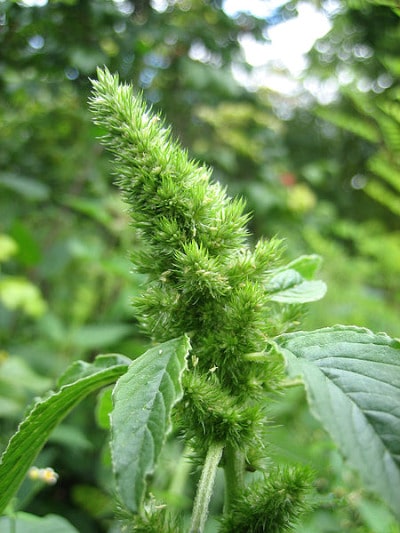
Native to the Americas but found on most continents, amaranth is an edible weed. You can eat all parts of the plant, but be on the look out for spines that appear on some of the leaves. While not poisonous, amaranth leaves do contain oxalic acid and may contain large amounts of nitrates if grown in nitrate-rich soil. It’s recommended that you boil the leaves to remove the oxalic acid and nitrates. Don’t drink the water after you boil the plant. With that said, you can eat the plant raw if worse comes to worst.
Asparagus (Asparagus officinalis)
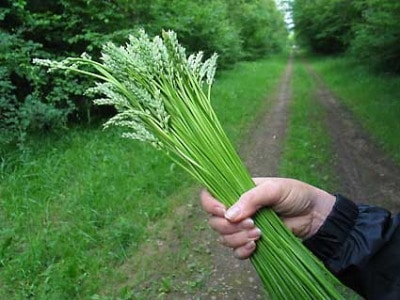
The vegetable that makes your pee smell funny grows in the wild in most of Europe and parts of North Africa, West Asia, and North America. Wild asparagus has a much thinner stalk than the grocery-store variety. It’s a great source of source of vitamin C, thiamine, potassium and vitamin B6. Eat it raw or boil it like you would your asparagus at home.
Burdock (Arctium lappa)
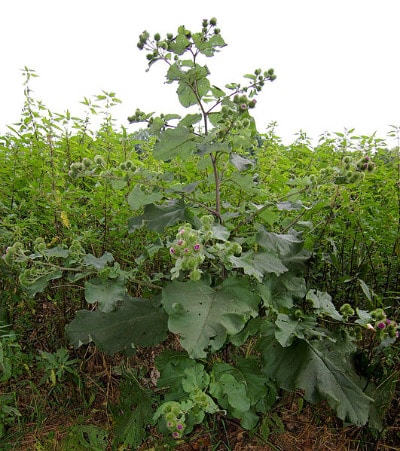
Medium to large-sized plant with big leaves and purplish thistle-like flower heads. The plant is native to the temperate areas of the Eastern Hemisphere; however, it has been naturalized in parts of the Western Hemisphere as well. Burdock is actually a popular food in Japan. You can eat the leaves and the peeled stalks of the plant either raw or boiled. The leaves have a bitter taste, so boiling them twice before eating is recommended to remove the bitterness. The root of the plant can also be peeled, boiled, and eaten.
Cattail (Typha)
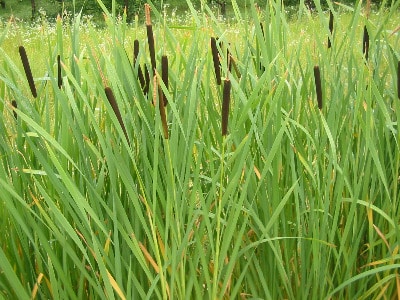
Known as cattails or punks in North America and bullrush and reedmace in England, the typha genus of plants is usually found near the edges of freshwater wetlands. Cattails were a staple in the diet of many Native American tribes. Most of a cattail is edible. You can boil or eat raw the rootstock, or rhizomes, of the plant. The rootstock is usually found underground. Make sure to wash off all the mud. The best part of the stem is near the bottom where the plant is mainly white. Either boil or eat the stem raw. Boil the leaves like you would spinach. The corn dog-looking female flower spike can be broken off and eaten like corn on the cob in the early summer when the plant is first developing. It actually has a corn-like taste to it.
Clovers (Trifolium)

Lucky you-clovers are actually edible. And they’re found just about everywhere there’s an open grassy area. You can spot them by their distinctive trefoil leaflets. You can eat clovers raw, but they taste better boiled.
Chicory (Cichorium intybus)
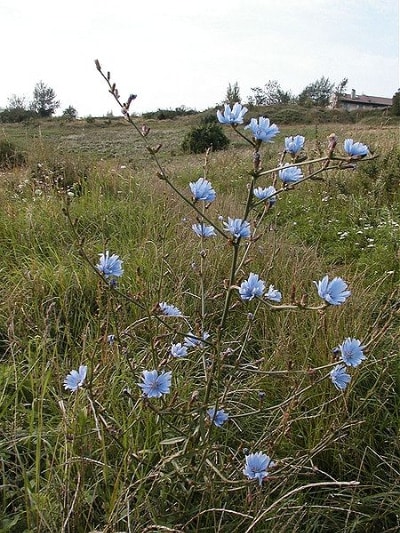
You’ll find chicory growing in Europe, North America, and Australia. It’s a bushy plant with small blue, lavender, and white flowers. You can eat the entire plant. Pluck off the young leaves and eat them raw or boil them. The chicory’s roots will become tasty after boiling. And you can pop the flowers in your mouth for a quick snack.
Chickweed (Stellaria media)

You’ll find this herb in temperate and arctic zones. The leaves are pretty hefty, and you’ll often find small white flowers on the plant. They usually appear between May and July. You can eat the leaves raw or boiled. They’re high in vitamins and minerals.
Curled Dock (Rumex crispus)
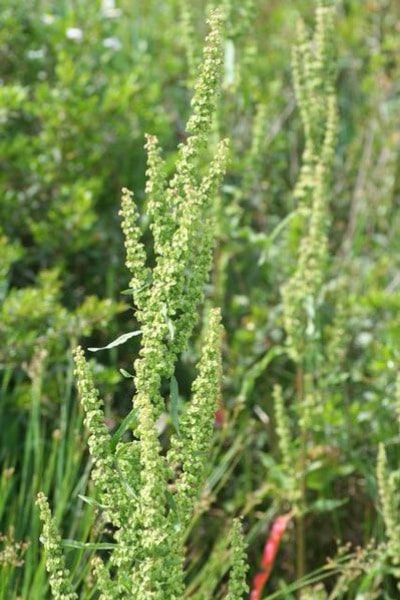
You can find curled dock in Europe, North America, South America, and Australia. It’s distinguished by a long, bright red stalk that can reach heights of three feet. You can eat the stalk raw or boiled. Just peel off the outer layers first. It’s recommend that you boil the leaves with several changes of water in order to remove its naturally bitter taste.
Dandelion (Taraxacum officinale)

Sure, it’s an obnoxious weed on your perfectly mowed lawn, but when you’re out in the wild this little plant can save your life. The entire plant is edible- roots, leaves, and flower. Eat the leaves while they’re still young; mature leaves taste bitter. If you do decide to eat the mature leaves, boil them first to remove their bitter taste. Boil the roots before eating as well. You can drink the water you boiled the roots in as a tea and use the flower as a garnish for your dandelion salad.
Field Pennycress (Thalspi vulgaris)
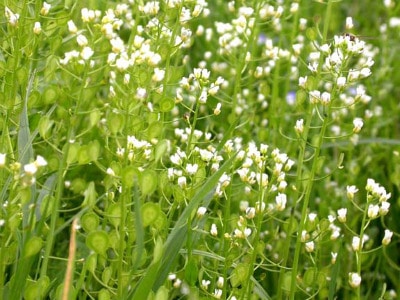
Field Pennycress is a weed found in most parts of the world. Its growing season is early spring to late winter. You can eat the seeds and leaves of field pennycress raw or boiled. The only caveat with field pennycress is not to eat it if it’s growing in contaminated soil. Pennycress is a hyperaccumulator of minerals, meaning it sucks up any and all minerals around it. General rule is don’t eat pennycress if it’s growing by the side of the road or is near a Superfund site.
Fireweed (Epilobium angustifolium)
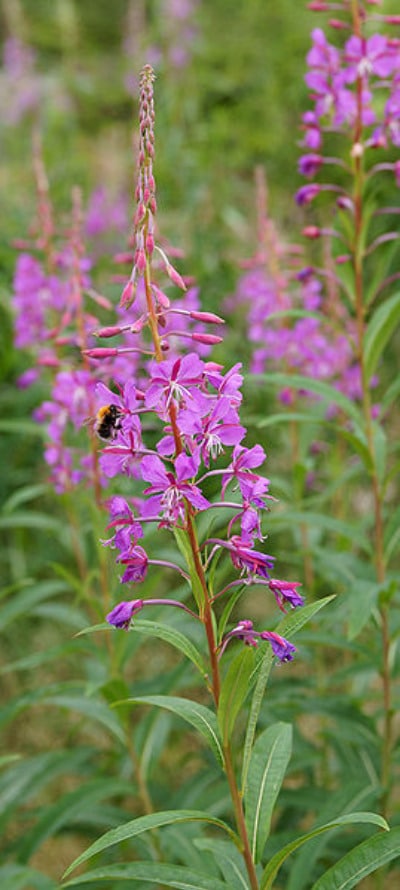
This pretty little plant is found primarily in the Northern Hemisphere. You can identify fireweed by its purple flower and the unique structure of the leaves’ veins; the veins are circular rather than terminating on the edges of the leaves. Several Native American tribes included fireweed in their diet. It’s best eaten young when the leaves are tender. Mature fireweed plants have tough and bitter tasting leaves. You can eat the stalk of the plant as well. The flowers and seeds have a peppery taste. Fireweed is a great source of vitamins A and C.
Green Seaweed (Ulva lactuca)

If you’re ever shipwrecked on a deserted island, fish the waters near the beach for some green seaweed. This stuff is found in oceans all over the world. After you pull green seaweed from the water, rinse with fresh water if available and let it dry. You can eat it raw or include it in a soup. Or if you’re particularly enterprising, catch a fish with your homemade spear and use the seaweed to make sushi rolls, sans rice.
Kelp (Alaria esculenta)

Kelp is another form of seaweed. You can find it in most parts of the world. Eat it raw or include it in a soup. Kelp is a great source of folate, vitamin K, and lignans.
Plantain (Plantago)
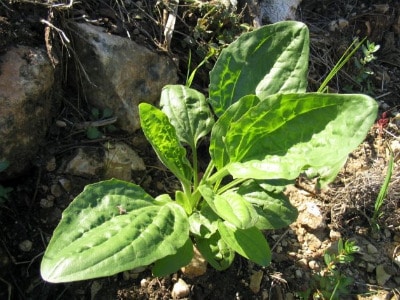
Found in all parts of the world, the plantain plant (not to be confused with the banana-like plantain) has been used for millennia by humans as a food and herbal remedy for all sorts of maladies. You can usually find plantains in wet areas like marshes and bogs, but they’ll also sprout up in alpine areas. The oval, ribbed, short-stemmed leaves tend to hug the ground. The leaves may grow up to about 6″ long and 4″ wide. It’s best to eat the leaves when they’re young. Like most plants, the leaves tend to get bitter tasting as they mature. Plantain is very high in vitamin A and calcium. It also provides a bit of vitamin C.
Prickly Pear Cactus (Opuntia)
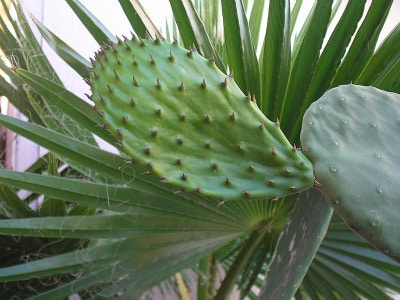
Found in the deserts of North America, the prickly pear cactus is a very tasty and nutritional plant that can help you survive the next time you’re stranded in the desert. The fruit of the prickly pear cactus looks like a red or purplish pear. Hence the name. Before eating the plant, carefully remove the small spines on the outer skin or else it will feel like you’re swallowing a porcupine. You can also eat the young stem of the prickly pear cactus. It’s best to boil the stems before eating.
Purslane (Portulaca oleracea)
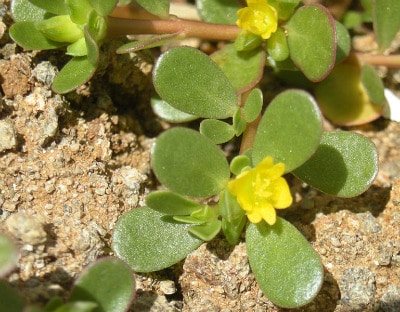
While considered an obnoxious weed in the United States, purslane can provide much needed vitamins and minerals in a wilderness survival situation. Ghandi actually numbered purslane among his favorite foods. It’s a small plant with smooth fat leaves that have a refreshingly sour taste. Purslane grows from the beginning of summer to the start of fall. You can eat purslane raw or boiled. If you’d like to remove the sour taste, boil the leaves before eating.
Sheep Sorrel (Rumex acetosella)

Sheep sorrel is native to Europe and Asia but has been naturalized in North America. It’s a common weed in fields, grasslands, and woodlands. It flourishes in highly acidic soil. Sheep sorrel has a tall, reddish stem and can reach heights of 18 inches. Sheep sorrel contains oxalates and shouldn’t be eaten in large quantities. You can eat the leaves raw. They have a nice tart, almost lemony flavor.
White Mustard (Synapsis alba)
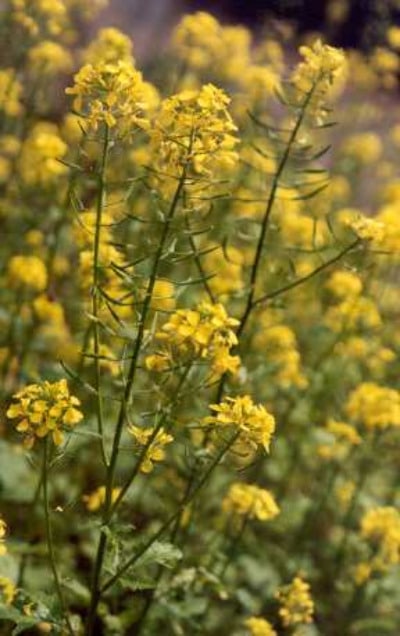
White mustard is found in the wild in many parts of the world. It blooms between February and March. You can eat all parts of the plant- seeds, flowers, and leaves.
Wood Sorrel (Oxalis)
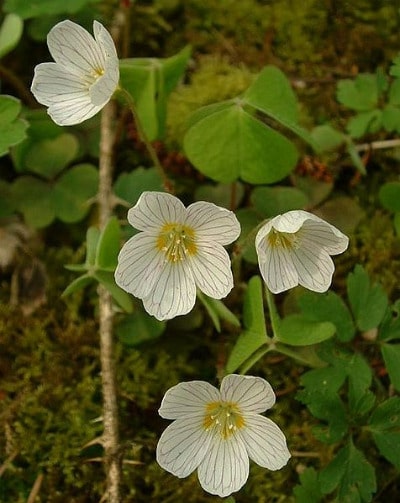
You’ll find wood sorrel in all parts of the world; species diversity is particularly rich in South America. Humans have used wood sorrel for food and medicine for millennia. The Kiowa Indians chewed on wood sorrel to alleviate thirst, and the Cherokee ate the plant to cure mouth sores. The leaves are a great source of vitamin C. The roots of the wood sorrel can be boiled. They’re starchy and taste a bit like a potato.
AoM Man Up Challenge
Go take a hike or a walk in the woods and try to locate and identify three edible plants.
Fort Wayne Site-of-the-Day

My family has a vested interest in this event. Time, energy, planning and coordinating.
Last year my wife Kathy (TheSimplifiedLifeCoach.com) decided to produce a Thrift Style Fashion Show which was held in April 2009.
It was a fun event and successful too as it raised money for the charities that she designated and everyone wanted her to do another one.
So here we go. The Fall Edition. This Saturday morning. This is done purely on a volunteer basis, with the participating stores covering the costs so every dollar from the ticket sales will go to the charity.
Sunday, October 10, 2010
Life Success
Getting married is on many peoples list of things that want to do to be successful, yet it was never on my list and I've walked down the aisle twice, out of love, not because it was on my list of things to do.
Here's some thoughts on Success from the DLM Blog and congrats Josh & Mad!
What Does Success Mean to You?
Posted: 30 Sep 2010 08:51 AM PDT

All of us want to succeed in life. We want to accomplish something – to feel that in some way, we’ve “won”. It’s easy to get sucked in to thinking that we have to succeed on the world’s terms when, really, we each need to define success for ourselves.
What does success look like to you? Is it the model set down by your parents or grandparents: a steady job, your own house, kids? Is it what all your friends are chasing: big salaries, a huge television and a flashy phone?
When we point to someone and call them a “success”, what exactly do we mean? All too often, we mean that they’ve reached a high level of their career and they’re making a six-figure salary. But success is a lot more than how much money you make, or how much stuff you own...
Why Success Isn’t Money
We all know that money doesn’t make us happy. Beyond a certain level of security, having more money won’t make a difference – sure, you can always buy another gadget or splash out on a better bottle of wine, but will a few extra megapixels on your camera really matter? Will you even notice the difference between a $10 and a $100 bottle of wine?
A big bank balance might be nice to look at, but it can never replace the love of family and friends, or the sense of satisfaction gained by doing work which you enjoy and which is fulfilling. You could be earning $100,000 working a 60-hour week in a job which you hate ... is that success? I’d say no, it’s not.
Success Isn’t About Having Stuff
Sometimes, we treat success as though it’s a game where we need to rack up as many points as possible. We think success means having a particular career, or owning lots of flashy gadgets, or even having a partner and three kids.
I’m not saying that your career or your family don’t matter – of course they do. But in themselves, are they really “success”? Is your unmarried uncle a failure because he chose to travel the world and work for charities, rather than buying a house, settling down and having a family? I’d say no, he’s not.
Success Is Living Your Best Life
So what exactly is success? Well, there’s no single definition. Success is about living your best life, and only you can say what that means. It doesn’t matter what your friends or parents or society thinks: defining success is up to you.
Perhaps, to you, success means having enough money to get by, and having as much free time as possible. It might mean getting recognition in a particular field – maybe as an artist or a musician. For some people (both men and women), success might be about raising happy, healthy children.
I’d encourage you, whatever stage of your life you’re at, to take some time to truly think about what success looks like to you. Is it really about having a particular qualification or achieving a promotion? Or is it about having the life which you truly want?
Have you bought into someone else’s definition of success? Is it time to start living life on your own terms? If so, what’re you going to do about it?
As ever, feel free to share your thoughts in the comments.
 | Written on 9/30/2010 by Ali Hale. Ali writes a blog, Aliventures, about leading a productive and purposeful life (get the RSS feed here). As well as blogging, she writes fiction, and is studying for an MA in Creative Writing. | Photo Credit: See-ming Lee 李思明 SML |






